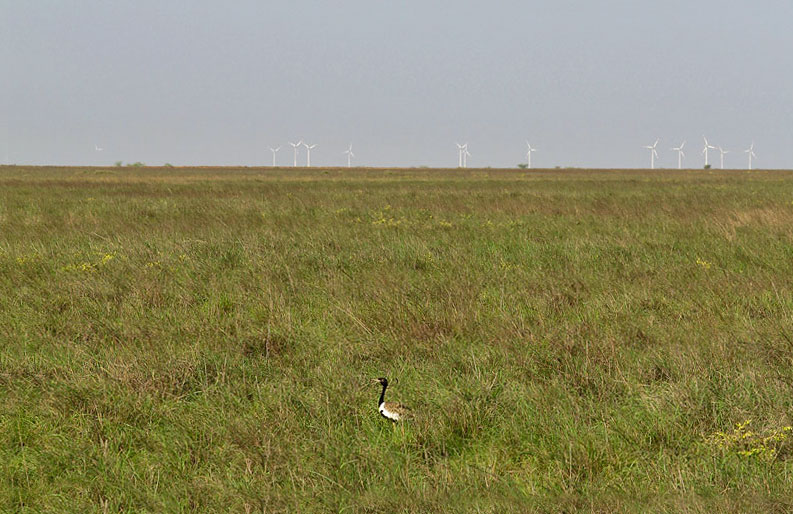
A few decades back, there was hardly any village in the state of Gujarat which didn’t fall in the distribution range of the Lesser Florican (Sypheotides indica). As the local name ‘Khadmor’ (Khad = Grass, Mor = Peacock) indicates, the Lesser Florican resembles the Indian Peafowl (Pavo cristatus), and lives in grassland habitats. This bird is a keystone species of healthy grasslands. The bird’s wide spread distribution of the past has changed significantly now.
Its popularity as a game bird prior to independence, led towards unethical hunting practices that wiped out the Lesser Florican in large numbers. However, habitat loss is the current significant threat. In the three decades between 1951 and 1982, annual growth rates of of livestock had increased from 0.93% to 2.60%. This increased grazing pressure and demand for fodder resulted in the conversion of grasslands into croplands. The vast patches of grasslands of yesteryears have thus disappeared and the remaining small patches are not being managed scientifically to prevent alteration of habitat. Threat factors like encroachments for agricultural purpose, illicit grazing practices, infrastructure and other developments in the vicinity of grasslands, unethical use of pesticides, invasion of weeds like Prosopis juliflora etc. are all pushing grassland species towards extinction.
Interestingly, there has been an increase in the number of Lesser Floricans in the Blackbuck National Park, Velavadar. This indicates that habitats in the surrounding areas have shrunk and that the birds are congregating densely in such small patches with greater protection.
A proper scientific management of the remaining grassland patches and an addition of other important grasslands as protected areas is the only way to save this species from extinction.

 CI is a non-profit, non-commercial portal that aims to facilitate wildlife and nature conservation by providing reliable information and the tools needed to campaign effectively.
CI is a non-profit, non-commercial portal that aims to facilitate wildlife and nature conservation by providing reliable information and the tools needed to campaign effectively.
Chosen as 'Picture of the Week'
A proper scientific management of the remaining grassland patches and an addition of other important grasslands as protected areas is the only way to save this species from extinction.